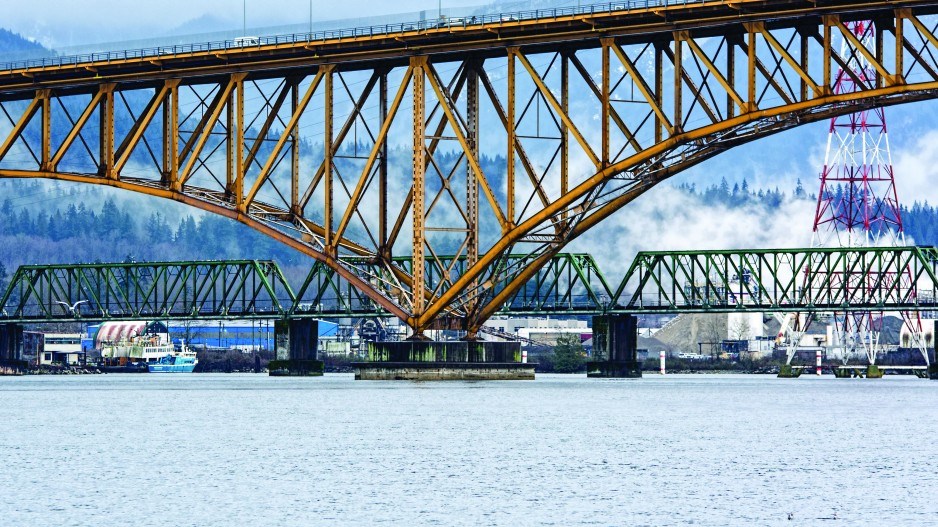Developers of North Shore port infrastructure face the same transportation challenge as their residential housing counterparts: bridge congestion.
However, the challenge for the area’s port developers is shaping up to be far more complex. They have only one bridge and one lane across Burrard Inlet connecting the North Shore’s rail traffic to Metro Vancouver; housing and other developers have two bridges and nine lanes connecting them and their vehicles to the rest of the region.
Consider also that the Second Narrows rail bridge is out of commission five to six hours per day when it’s lifted to allow marine traffic to move through the narrows.
Add in the significant increase in train trips across the bridge that Fibreco Export Inc.’s new specialty grains handling facility will generate when it’s operating later this year and when the North Shore’s $600 million G3 grain terminal is completed in early 2020, and the Second Narrows rail bridge bottleneck could become a transportation choke point that will limit the terminals’ abilities to benefit from their design efficiencies.
The G3 project alone is expected to increase the Port of Vancouver’s annual grain-handling capacity by eight million tonnes, and Fibreco’s specialty grains business will process about two million tonnes of agri-products annually.
All of that grain has to get to North Shore terminals via railcars that cross the Second Narrows rail bridge. At both G3 and Fibreco, design efficiencies will allow the terminals to unload longer trains faster. But efficiencies at terminals won’t matter much if bottlenecks delay train arrivals or departures.
Fibreco CEO Kerry Lige agreed.
“The bridge is definitely a limiting factor for us as an industry. The North Shore corridor is one of the issues all of us on the North Shore have to consider in our expansion plans. We could all expand and build more capacity at our facilities, but if the railway can’t support that volume and provide the service, it’s a big problem for us.”
He noted that some funding through the federal government’s $2 billion National Trade Corridors Fund has been allocated to add tracks and improve access to the rail tunnel that feeds into Burrard Inlet’s south shore and onto the bridge.
“Those two things are going to help increase the capacity of how many trains can go across the bridge, but it is fair to say that at some point we are going to run into a capacity issue coming across the bridge.”
Jonathan Abecassis, Canadian National Railway’s (CN) director of media relations, said in an email that the company spent $340 million in 2018 alone as part of an ongoing investment to improve its B.C. network.
CN (TSX:CNR) came under fire last year following Canadian Federation of Agriculture complaints focused on railcar bottlenecks that were seriously delaying grain exports.
Abecassis said CN customers have also invested in increasing capacity at their facilities.
“That said, the supply chain requires ongoing investment from all its partners – the port, other railways, customers and the federal government – to meet the growing demands of both import and export traffic.”
While Abecassis added that the design of expansion projects like G3 will help improve rail transportation efficiencies, he conceded that the North Shore is approaching full capacity for rail.
Running more trains to and from the North Shore via Squamish, he said, was not a good option “because it is longer round-trip and the track speed is lower due to the mountain grade and associated restrictions on the number of cars and type of locomotive required for the terrain.”
Abecassis said improvements in Port of Vancouver goods movement will require ongoing federal government investment in grade separations and other transportation infrastructure.
@timothyrenshaw




